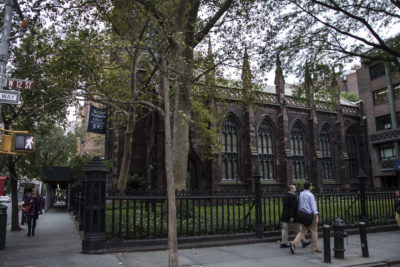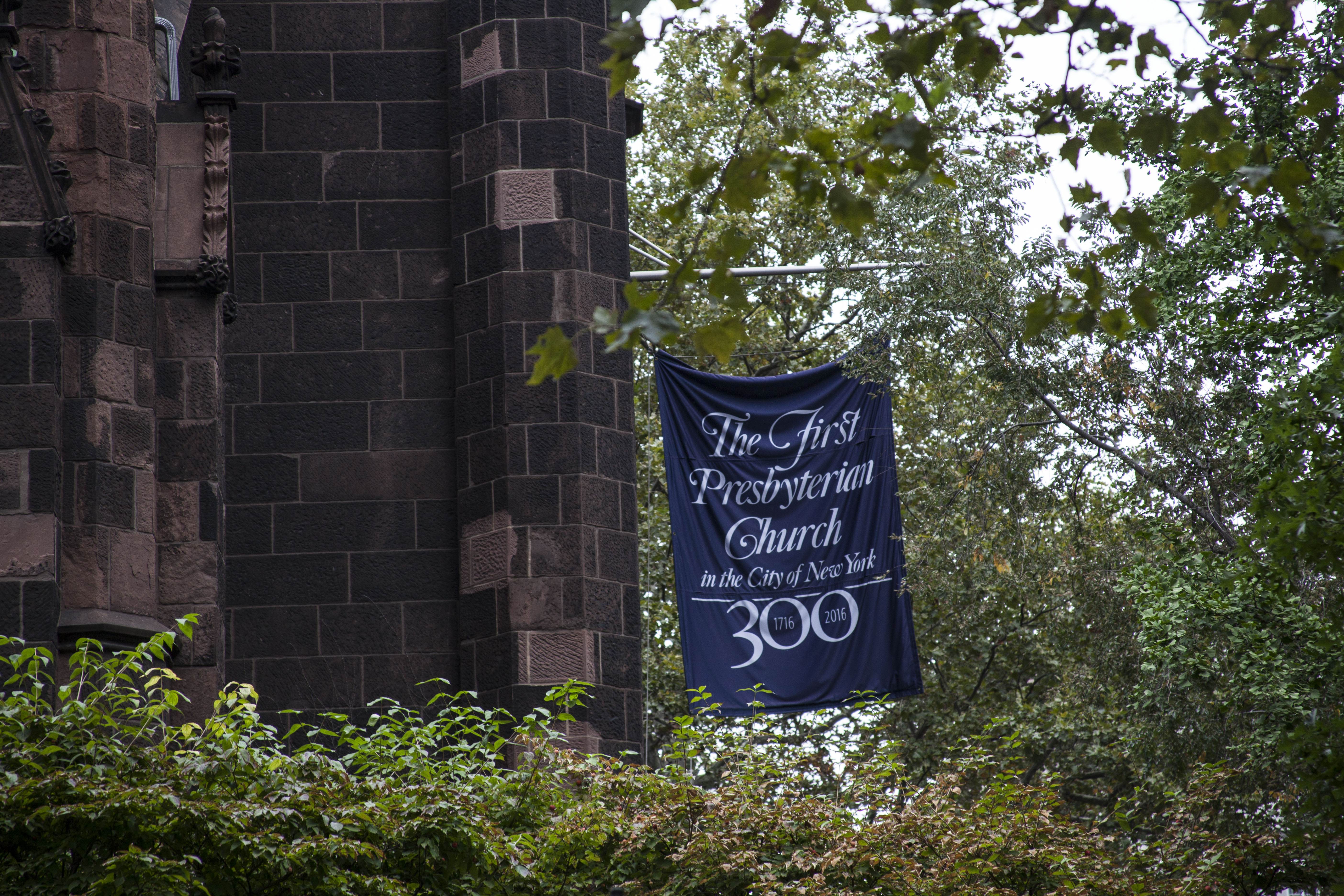A flag reading “300 Years!” flutters in the wind on the corner of 12th Street and Fifth Avenue as New School students walk to class.
The flag belongs to the First Presbyterian Church of New York. While the name may sound generic, it is actually rather fitting. The church has been around since 1716, which makes it the first Presbyterian church in Manhattan.
Originally located deeper in Lower Manhattan on Wall Street, the First Presbyterian Church, or First Church as it is known by its members, relocated to Fifth Avenue in 1846 to accommodate the growing population on the island, said Dr. Jon Walton, the senior pastor of the church.
![]()
“During that time, people were leaving the lower part of Manhattan and letting the commercial enterprises and businesses take over,” said Walton. “Anything around 23rd Street it was considered the suburban part of Manhattan.”
For more than 200 years, the church has served as both landmark to the neighborhood of Greenwich Village and also to The New School. But the block is not the only thing the First Church has in common with university.
The First Church is not your average religious establishment. It was founded upon and still continues to be guided by progressive principles.
“There has always been a kind of rebellious, countercultural element in this congregation,” Walton said.
While the First Church is on the forefront of today’s issues, such as recognizing the LGBTQ community and hosting activities like a book discussion for Ta-Nehisi Coates’ Between the World and Me, their progressive thinking predates the Revolutionary War.

“The church was known in those days as the church of the patriots. So, it was rebelling against the throne,” Walton said.
Under one of the church’s earliest pastors, John Rodgers, the congregation would meet in secret to practice and share their views and beliefs.
In the 1890s, another pastor, Charles Parkhurst, challenged one of the most corrupt political rings in the history of New York.
“Parkhearst took on the political machine Tammany Hall,” Walton said. “He later went on to hire a private detective and went around to all these prostitution and drug dens and exposed all these police who were on the take.”
Author Harry Emerson Fosdick was also a notable leader of the church. He opposed racism and injustice in the 1930s, as well as acknowledged evolution in the church.
With more than 1,200 members, including students from The New School, New York University, Cardoza Law and Cooper Union, the First Church has been able to maintain a relationship with the neighborhood with its dedication to progressive thought.
“I think that is a big reason why we have been a church for 300 years,” Walton said.
Aside from being a place of worship for the open minded, the First Church’s relationship with The New School is nothing new.
“Eugene Lang and Parsons both had their graduation ceremonies here,” Walton said.
Although New School graduation has moved due to an ever-growing student body in the past few years, the church shares, and it this point arguably always will, a lifelong connection with The New School.
Photo by: Julia Himmel







